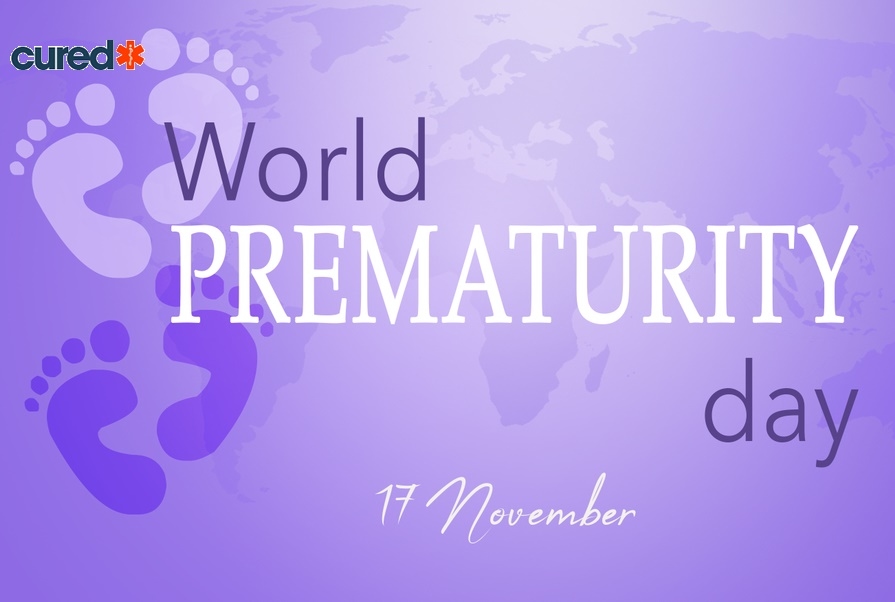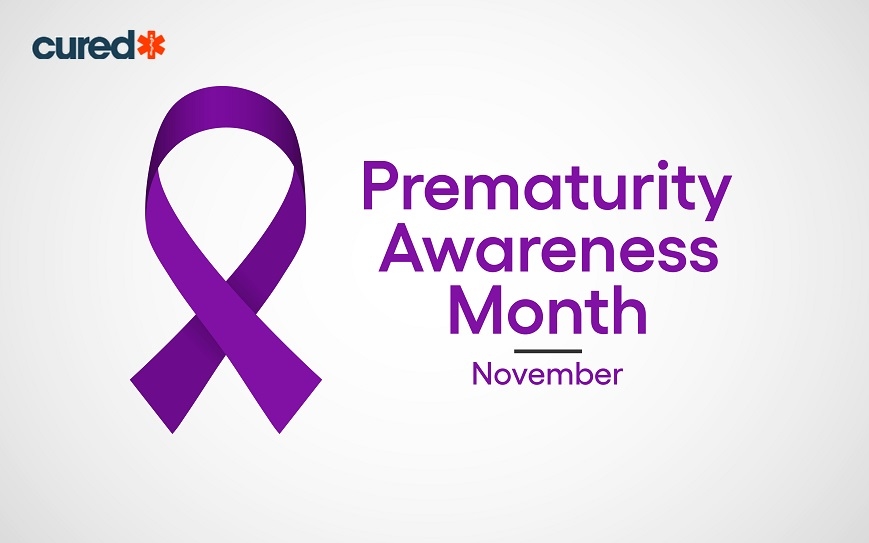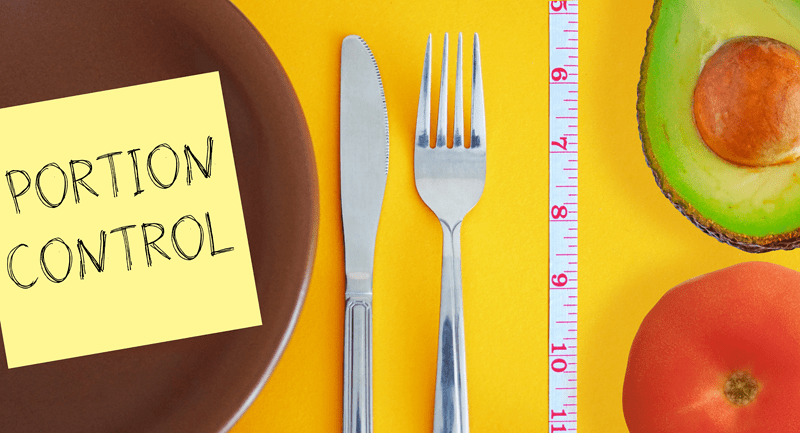
World Prematurity Day is observed every year on November 17. It is one of the most significant events in a year, aiming to raise awareness of all kinds of challenges and burdens faced by people globally. EFCNI initiated the day in partnership with the European Parent Organizations in 2008. The international partners and co-founders for the World Prematurity Day - March of Dimes (USA), LittleBigSouls (Africa), and National Premmie Foundation (Australia), come together every year and celebrate this intercontinental movement. Countless people and organizations from over 100 countries join in with these parent organizations, participating in all the activities, events, and all the fun-filled actions catered to addressing preterm birth and improving the daily lives of preterm babies and their families/caretakers.
Approximately 15 million babies are born preterm every year, accounting for one in every 10 babies globally. Today, premature birth is a leading cause of death among children under the age of five. Urgent action must be taken to address preterm birth considering these first country-level statistics - 15 million babies are born too soon every year. This number is bound to increase in most countries today, considering the reliable time trend data. Preterm birth is posing greater risks and challenges even to the Millennium Development Goal for child survival since 2015. For all preterm babies who survive, there is an additional need to cater to the requirements of prematurity-related disability, which affects families and the healthcare system, globally.
The theme for World Prematurity Day

The global theme for World Prematurity Day 2021 is - Zero separation. Act Now! Keep parents and babies born too soon together.
The theme is chosen carefully since babies stay warm and cry less when closer to their mothers. Breastfeeding also helps get the baby a better start, and both mother and the baby get the opportunity to spend more time together, which begins at birth. This way, mothers can learn to recognize their preterm babies’ needs better and respond to those needs tenderly and lovingly. This connection then goes ahead to last a lifetime for both.
About Preterm Birth
Preterm Birth, also called premature birth, is the birth of a baby at 37 weeks or fewer in terms of gestational age, instead of full-term delivery at approximately 40 weeks. Extremely early preterm birth is before 32 weeks, while early preterm birth occurs between 32-36 weeks and late preterm birth happens between 34-36 weeks.
Preterm babies have greater risks of cerebral palsy, hearing problems, delays in development, and vision-related problems. The earlier the baby is born, the greater chance of developing such risks would be.
Causes of spontaneous preterm birth are usually unknown. The risk factors can include diabetes, high blood pressure, multiple gestations, being either obese or underweight, air pollution exposure, tobacco smoking, vaginal infection, and psychological stress.
Preterm birth is also one of the most common causes of death among infants globally.
Almost a million babies die every year because of complications related to preterm birth. Most survivors face a lifetime of visual and/or hearing difficulties, learning disabilities, and other disabilities. World Prematurity Day helps raise awareness about cost-effective interventions that help address all the issues. This even includes necessary care and support during childbirth and in the postnatal stage for both, mother and the child. This also includes antenatal steroid injections administered to pregnant women at risk of preterm labor. These injections also help strengthen the immune system and the lungs of the baby. Other interventions like these include providing antibiotics to the newborn to treat infections, and kangaroo mother care, where the mother is carrying the baby, offering comfort and warmth through skin-to-skin contact and breastfeeding.
Understanding Global Burden On World Prematurity Day

Since over 60% of preterm births occur in South Asia and Africa, preterm births are a global problem. There is, however, a significant difference in the survival of premature babies, depending on where they take birth. Over 90% of extremely premature babies, i.e., less than 28 weeks born in low-income countries, die in the first few days of being born. Less than 10% of extremely premature babies die in high-income settings. World Prematurity Day is an important moment to reflect and commit to action, address all the inequities, and prevent avoidable mortality and other health issues caused by preterm birth.
Preventing Premature Births
There are plenty of measures to understand when it comes to preventing premature births. These measures are predominantly taken in areas of healthcare and lifestyle changes before planning pregnancy to decrease any risk of preterm birth.
Preconception and maternal care
Comprehensive advice for soon-to-be mothers and fathers is getting access to good quality preconception care. This is perhaps the most effective way to prevent pregnancy-related complications. It is essential to attend all health checkups and scheduled appointments to examine the mother and baby closely. During these visits, risk factors that can pose possible health threats for either the mother or the baby, or even both, can be identified, treated, and prevented.
During these visits, risk factors can be identified and mitigated to save lives. In order to ensure better care and health for the mother and the child during pregnancy, mothers should regularly visit their healthcare providers during the pregnancy period, even when they are anticipating pregnancy.
Lifestyle changes
Lifestyle modifications like changing one’s habits, daily behavior, hobbies, and even the environment they live in can influence their health to get better. During pregnancy, this becomes extremely important since everything has an impact on the survival of the unborn baby. Considering this, it is extremely important for soon-to-be parents to understand and think about their daily lives, how it can affect their unborn child and what can be done and changed to ensure the baby gets the best in terms of care and nutrition from the very beginning. Care should also include that in terms of education and counseling of parents for better pregnancy care and later child care, optimal nutrition, physical activity, tobacco and substance abuse, and other essential healthcare factors.
Need For Treatment
Without any specialized treatment or plan of action, most at-risk newborns will not be able to survive their first few days of life. Since 2017, we have lost approximately 2.5 million preterm babies every year, mostly from causes that could have been prevented. At least two-thirds of such babies could be saved.
A handful of the babies who end up surviving face chronic diseases and developmental delays later in life. In addition to this, a million preterm babies end up surviving with long-term disabilities.
With the proper treatment, plan of action, and nurturing care, preterm babies can live their lives without any major complications. According to a report by WHO and UNICEF, by 2030, the lives of approximately 2.9 million women, newborns, and stillborns in over 80 countries can be saved if smarter strategies are implemented. For instance, if the same healthcare providers care for both the mother and the preterm baby through labor, birth, and after delivery, they can easily identify if any problems are setting in.
In addition to this, almost 68% of preterm deaths can be averted by 2030 by simply following a few strategies like exclusive breastfeeding, skin-to-skin contact between the mother and the baby, intaking the right antibiotics and other medication, using essential medical equipment, access to clean water, well-equipped health facilities, skilled healthcare professionals and more. Other measures include resuscitating babies who cannot breathe properly, giving injections to the mothers to prevent any form of bleeding, delaying the cutting of the umbilical cord, etc. can also help save over a million lives each year.
As per reports, the world cannot reach global targets to achieve health for everyone unless they transform care for newborn babies and preterm babies. Without progressing in this field, we cannot meet the global targets. To save newborn babies and preterm babies, WHO and UNICEF, in their report, recommend:
- Offering round-the-clock inpatient care for preterm babies for a week or more, as needed
- Training healthcare professionals, especially nurses, to provide hands-on care working closely with families of preterm babies
- Harnessing the power of families, especially parents, by teaching them tips and tricks on becoming better caregivers for their preterm babies to reduce stress, help such babies gain weight, and allow the baby’s brain to develop properly
- Offering good quality care should be a part of every nation’s policy and a lifelong investment, especially in South Asia and Africa.
- Counting and tracking every single moment of a preterm baby, allowing parents and caregivers to monitor their progress and improve results if required
- Allocating essential resources and funds that help save lives of multiple preterms, especially in low and middle-income countries.
Almost thirty years ago, the Convention on the Rights of the Child guaranteed all preterm babies and newborns the right to the highest health standards, healthcare, and specialized treatment. It is time for countries around the globe to ensure the legislative, medical, human, and financial resources are allocated well in place to turn this right into a reality for every single child. This World Prematurity Day, let’s pledge to support the care and protection of preterm babies everywhere. Support the light purple color this year; you could be making a difference in someone’s life!
Recent Articles

Exercise for Intellectual Disabilities: Safe Fitness
Exercise is often presented as a universal solution, but for adults with intellectual disabilities, most advice is not usable as written. Programs are either too vague or too demanding. The result is predictable. People get excluded, injured, or discouraged.Exercise for intellectual disabilities works only when it is designed around real ability, not assumptions. The goal is not performance. It is safer movement, better stamina, and the ability to handle daily physical demands without stress.This article explains how physical activity for intellectual disabilities should be planned and delivered, what adaptive exercise programs look like in practice, and why inclusive fitness programs matter when done correctly.Exercise for Intellectual Disabilities Starts With FunctionExercise for intellectual disabilities should always support everyday movement. That includes walking, standing, lifting, reaching, and maintaining balance. If a workout does not help with these basics, it is not useful long term.Many adults with intellectual disabilities have lower muscle strength, slower coordination, or limited endurance. That does not mean they cannot exercise. It means exercises must be taught clearly and repeated often.Programs that work usually share the same structure:Same routine order each sessionFew exercises, repeated consistentlyClear demonstrations instead of long explanationsSteady pacing without rushingThis approach makes physical activity for intellectual disabilities easier to follow and safer to repeat.Top Pick: Best Exercises To Lose Belly Fat And Get A Flat StomachWhy Exercise Often Gets AvoidedAvoidance is rarely about motivation. More often, it comes from past experiences where exercise felt confusing, unsafe, or embarrassing.Common reasons include:Gyms that feel overwhelmingInstructors who move too fastExercises that require balance or coordination too earlyLack of supervisionSpecial needs exercise programs exist to remove these barriers. When exercise feels predictable and manageable, participation improves.What Adaptive Exercise Programs Look Like in PracticeAdaptive exercise programs adjust movements so they can be performed safely without removing purpose. These programs are not watered down versions of fitness. They are structured differently.Typical adjustments include:Using chairs or walls for stabilityReplacing machines with resistance bandsReducing range of motionBreaking one exercise into smaller partsFor example, instead of lunges, an adaptive exercise program may focus on stepping forward and back while holding support. The legs still work. Balance risk stays controlled.Adaptive exercise programs rely on repetition. Familiarity matters more than variety.Special Needs Exercise Programs and Safety PrioritiesSpecial needs exercise programs should always favor control over intensity. Many adults with intellectual disabilities also manage joint issues, heart conditions, or sensory sensitivities.Safe exercise for special needs adults includes:Longer warm upsClear visual start and stop cuesBuilt in rest periodsConstant attention to posture and breathingPrograms should avoid loud music, crowded layouts, or sudden transitions. A calm environment supports focus and reduces anxiety.Safe exercise for special needs adults also means allowing bad days. Energy levels vary. Programs should adapt without pressure.Inclusive Fitness Programs That Actually WorkInclusive fitness programs allow people with and without disabilities to train in the same environment. When structured poorly, they fail. When structured well, they improve confidence and consistency.Inclusive fitness programs work when:Every exercise has an easier and harder optionModifications are demonstrated openlyNo one is singled outIn a group class, one person may perform a standing exercise while another remains seated. Both are participating fully.Inclusive fitness programs reduce isolation and help normalize adaptive movement in shared spaces.Safe Exercise at Different Ability LevelsSafe exercise for special needs adults depends on current ability, not diagnosis. Programs should scale gradually.Entry Level FocusShort walksChair based strength workGentle stretchingBalance with supportModerate LevelLonger walking sessionsResistance bandsStanding balance drillsSimple circuitsHigher CapacityStructured strength routinesLow impact group classesSports based activitiesAt all levels, safe exercise for special needs adults prioritizes movement quality over repetition count.Keeping Physical Activity ConsistentPhysical activity for intellectual disabilities becomes sustainable when routines stay familiar. Too much variation creates confusion.What helps:Fixed days and timesSame exercise order each sessionVisual reminders or simple checklistsEncouragement without pressureConsistency builds comfort. Comfort builds participation.Daily Movement Still CountsPhysical activity for intellectual disabilities does not need to happen only in a gym. Daily movement supports strength and coordination just as effectively.Examples include:Walking short distancesCarrying light objectsHousehold tasksRecreational playThese activities reinforce functional movement without formal structure.Long Term Outcomes That MatterWhen adaptive exercise programs and special needs exercise programs are followed consistently, changes appear gradually.Common results include:Improved balanceBetter walking enduranceLower fall riskIncreased comfort in public spacesInclusive fitness programs also support social confidence by reducing fear of shared environments.You may also like: Power Yoga for Weight Loss That Actually Works FastWhy Program Design Matters More Than MotivationExercise for intellectual disabilities fails when programs copy mainstream fitness without adjustment. It succeeds when design respects real ability and learning pace.Adaptive exercise programs work because they meet people where they are. Inclusive fitness programs work because they remove unnecessary barriers. Safe exercise for special needs adults works because it builds trust.That is what keeps people moving week after week.FAQsSome of the frequently asked questions are:What kind of exercise is best for adults with intellectual disabilities?Walking, basic strength training, and balance exercises work best. Adaptive exercise programs allow these movements to be adjusted without removing their function.Are inclusive fitness programs safe for beginners?Inclusive fitness programs can be safe when instructors offer clear modifications and control pacing. Many beginners benefit from exercising alongside others.How often should physical activity be done?Physical activity for intellectual disabilities should happen regularly, ideally most days. Short, repeated sessions are more effective than occasional long workouts.

Allergic Rhinitis (Hay Fever): Symptoms, Causes, and Relief
Allergic rhinitis is one of those conditions that people often brush aside until it starts affecting their daily routine. Some feel it only when the weather shifts while others struggle with it through most seasons. What starts as mild irritation slowly becomes something that affects breathing, sleep, mood and overall comfort. Since this condition is extremely common and often poorly understood, I wanted to break it down in a simple way. This guide covers what is allergic rhinitis (hay fever) is, why hay fever shows up the way it does and how natural remedies for hay fever can make life a lot easier.What Is Allergic Rhinitis (Hay Fever)Allergic rhinitis is your body reacting to allergens in the environment. These allergens are usually harmless, yet your immune system treats them as a threat. When that happens your body releases chemicals that create irritation in the nose, throat and eyes. This is what we call hay fever. People experience it in different ways but the core issue remains the same. The immune system becomes sensitive to things like pollen, dust mites, mold spores and pet dander.The intensity of allergic rhinitis (hay fever) depends on how sensitive a person is, how often they are exposed to the allergen and the environment they live in. Some people experience hay fever symptoms only during the spring or monsoon while others experience allergic rhinitis throughout the year due to indoor triggers.Also check: What Are The Causes Of Common Colds: Understanding the ColdCommon Hay Fever Symptoms You Should Not IgnoreHay fever symptoms can be annoying at first and then slowly start affecting your productivity and rest. These symptoms vary from person to person but the usual ones include:Constant sneezingRunny or blocked noseItchy or watery eyesItchy throat or earsPressure or heaviness in the sinusesPost-nasal dripFatigue due to poor sleepMany people confuse hay fever symptoms with a regular cold. The biggest difference is that hay fever does not come with fever or body aches. Symptoms also tend to last much longer. If your nose feels irritated every time you enter a dusty room or step outside during pollen season then allergic rhinitis is most likely the cause.Over time untreated allergic rhinitis can trigger headaches, poor concentration and disturbed sleep. This is why managing hay fever early makes a big difference.What Causes Hay Fever (Allergic Rhinitis) And Why It Keeps Coming BackHay fever has a pattern. It often shows up during certain seasons or specific situations. The most common reasons for what causes hay fever (allergic rhinitis) include:Pollen from grass, trees or weedsDust mites present in mattresses or carpetsMold growing in damp areasPet danderSudden temperature changesPollution or smokeThe reason hay fever keeps coming back is simple. As soon as your body detects the allergen again the immune system reacts. The cycle continues unless exposure is reduced or your body is supported with proper treatment and natural remedies for hay fever.Lifestyle also plays a role. Humidity, pollution, lack of ventilation and unclean soft furnishings all increase the chances of allergic rhinitis.Natural Remedies For Hay Fever That Actually HelpWhen people search for natural remedies for hay fever they usually want relief without depending on medication all the time. While medicines are helpful, especially during severe allergic rhinitis, simple home based steps can make a noticeable difference. These natural remedies for hay fever work well when followed consistently.Steam inhalationWarm steam helps loosen mucus, clear nasal passages and reduce irritation. It is one of the easiest natural remedies for hay fever and works especially well before sleeping.Saline nasal rinseA simple saltwater rinse removes allergens trapped inside the nose. It also reduces inflammation and gives quick relief. Using it once or twice a day helps manage hay fever symptoms effectively.HoneyLocal honey may help some individuals by exposing the body to small amounts of pollen. This is not a guaranteed solution but many people notice reduced allergic rhinitis symptoms after regular use.Warm waterStaying hydrated thins mucus and reduces congestion. Warm water also soothes irritation and supports general sinus health.Turmeric and black pepperTurmeric contains curcumin which supports the body's natural anti inflammatory response. When mixed with black pepper the absorption improves. This simple combination is a common natural remedy for hay fever and helps reduce allergic rhinitis flare ups.GingerGinger can ease nasal irritation and support digestion which also influences overall immunity. Adding it to tea or warm water helps calm hay fever symptoms.Keeping rooms well ventilatedFresh air helps lower indoor allergen levels. Since allergic rhinitis often gets triggered indoors, proper airflow makes daily breathing much easier.aThese simple steps may look small but when combined they create long lasting relief.When To See A ProfessionalWhen hay fever signs persist for a long time or begin to interfere with your sleeping or living patterns, then it is highly recommended that you consult a doctor. Long-lasting allergic rhinitis may give rise to problems such as sinusitis infections or making the asthma symptoms worse. An allergist is capable of performing allergy testing and providing a specific treatment plan. This way, you will be able to tell for sure what you are allergic to and how to deal with it.One does not have to bear allergic rhinitis indefinitely. Out of the combination of natural remedies for hay fever, less exposure, and professional help, the vast majority of people see quite a lot of improvement.More to Discover: Unveiling the Mystery Behind Dry Skin: Causes & TreatmentFinal ThoughtsAllergic rhinitis may be common but it does not have to control your routine. Understanding your triggers and paying attention to consistent care can change how your body reacts. Natural remedies for hay fever work best when followed patiently. Whether your hay fever symptoms show up seasonally or throughout the year, a mix of awareness, clean surroundings and supportive habits can make daily life a lot smoother.Frequently Asked Questions On Allergic Rhinitis (Hay Fever)Got questions? We have covered a few commonly asked questionsIs allergic rhinitis the same as hay fever?Yes, both terms describe the same condition. Allergic rhinitis is the medical name, while hay fever is the more commonly used name. What is the best treatment for allergic rhinitis?The best treatment depends on how strong the symptoms are. Many people get good relief with antihistamines or nasal steroid sprays because they reduce sneezing, itching and congestion. Others use a mix of lifestyle changes, natural remedies and medication during allergy seasons. How do you treat allergic rhinitis permanently?There is no permanent cure, but symptoms can be controlled long term. Allergy shots and sublingual tablets are often recommended for people with strong or frequent symptoms. These treatments slowly train the body to react less to allergens. They do not provide instant results but can offer lasting improvements over time.What is the home remedy for allergic rhinitis?Several home remedies can help. Saline rinses remove allergens from the nose, steam helps loosen congestion and certain foods support the body when irritation increases. Keeping indoor spaces clean, washing bedding often, using air filters and reducing exposure to dust, mold and pollen also help keep symptoms in check.

How Portion Control Diet Helps You in Eating Balanced Meals?
A portion control diet is a simple way to manage how much food a person eats without making the process feel heavy. It focuses on serving enough food for the body instead of filling the plate without thinking. In this blog, the meaning of portion control is explained, along with steps that help manage meals, tips that guide daily eating, and simple ways that show how to control the portion size of food.What Is Portion Control and Why It MattersPortion control means being aware of how much food is placed on the plate. Many people eat more when the plate is big or when the food comes in large packets. Over time, these habits make it difficult to notice how much is actually needed. Portion control helps bring attention back to the amount served, which allows meals to feel steady and balanced.It is not a process of restricting someone or making your eating experience stressful. It is focused on building better eating habits with slow and steady changes. The moment you start following portion control meals, you will start noticing the time you are really hungry and need food. This awareness will make your eating process a lot better.Simple habits like using a smaller plate, slowing down during meals, and avoiding large containers help shape the mind's sense of portion sizes. Small steps like these acts as reminders that the body does not need more than what keeps it comfortable. These habits become natural when practiced daily.Portion control also encourages people to include better food combinations. A plate with vegetables, protein, and whole grains feels more balanced. When the plate is arranged this way, the meal becomes easier to manage and prevents overeating. Even though the changes look small, they build a routine that supports better health in the long run.Top Pick: Superfood Recipes for Energy, Immunity, and BalancePortion Control Tips for Daily EatingThese portion control tips help create a simple rhythm during meals. They can be followed by anyone and fit easily into a busy day because the changes are not difficult. They only take a bit of attention.Use Smaller Plates for Mindful EatingA smaller plate helps a person serve less food without feeling like something is missing. When the plate looks full, the mind accepts the portion as enough. Many people find that they eat slower and feel more satisfied when smaller plates or bowls are used. It also helps avoid the habit of piling food onto a large plate.Start Meals With a Glass of WaterA glass of water before eating helps the body pause for a moment. Sometimes people think they are hungry when they are actually thirsty. Water helps settle that confusion. It also slows down the start of the meal and allows the body to send clearer signals. This is helpful when someone is trying not to overeat.Avoid Eating From the ContainerEating directly from the container makes it hard to know how much has been eaten. Whether it is snacks, cereal, nuts, or anything else, pouring the food onto a plate or bowl creates a clear boundary. This simple step helps a person see the portion and avoid eating more than planned. It is a small habit that makes a big difference.Tips to Control the Portion Size of Food at HomeLearning how to control the portion size of food becomes easier when simple guides are followed. These steps help build a better sense of balance and make the plate easier to manage.Use Your Plate as a GuideA plate can act as a natural guide for a balanced meal. Half of the plate can include vegetables or fruits. The other half can be divided into protein and whole grains. This helps create portion control meals that are easy to follow without needing tools or strict measuring. This pattern also makes the plate look complete while staying balanced.Use Hand MeasurementsHand measurements are helpful when measuring tools are not around. The palm can guide the protein portion. A cupped hand can guide vegetables or fruits. A fist can guide grains. A thumb can guide fats. Because the hand size matches the person's body size, this method feels practical and can be used anywhere, even outside the home.Eat Slowly and Notice FullnessEating quickly prevents the body from signaling fullness in time. Slowing down helps the body send the right signals. Taking smaller bites, pausing between mouthfuls, and paying attention while eating are simple ways to feel full with an appropriate amount of food. These steps improve portion control without needing any extra tools.Simple Ways to Practice Portion Control Every DayDaily habits shape long-term success. When simple routines are followed, portion control becomes easier and more natural.Read Food Labels for Serving SizesFood labels show serving sizes that help a person understand the recommended amount. Many people do not notice serving sizes, which makes it easy to eat more than intended. Reading labels does not take long, and it helps create awareness that supports portion control.Measure Food When NeededMeasuring food helps understand real serving amounts. After some time, the person starts recognizing the right portion without special tools. This step teaches the difference between actual portions and what might feel like a portion, which is often larger than needed. Measuring builds a steady understanding that stays with the person.Keep a Simple Food DiaryA food diary helps track what is eaten during the day. Writing down meals brings attention to habits that may lead to larger portions. When the diary shows patterns, it becomes easier to make adjustments. This awareness helps the person guide their own eating without strict rules.Must Read: Best Mood Boosting Foods and Adaptogen Foods for YouHow Portion Control Helps Build Healthier Meals?Portion control meals help build balance. When the plate includes vegetables, protein, and whole grains, the body receives a steady mix of nutrients. This helps with energy and keeps hunger steady during the day.A portion control diet also supports mindful eating. When the person starts noticing how different foods affect hunger and fullness, they naturally begin choosing portions that match their needs. This helps avoid eating based only on habit or routine.Portion control also teaches the difference between hunger and availability. Many people eat when food is present, not when they are hungry. When portion control becomes part of their routine, they begin recognizing the difference and become more aware of their eating habits.ConclusionA portion control diet helps maintain balanced eating through simple habits. When people slow down, use smaller plates, and stay aware of portions, meals feel steady. These steps support better choices and help shape a routine that becomes easier to follow with time.

Superfood Recipes for Energy, Immunity, and Balance
Food should make you feel good. It should keep your body strong, your mind clear, and your mood steady. That's what superfood recipes are all about. When you eat real, nutrient-packed food, you give your body what it actually needs to stay sharp and balanced.You don't need expensive powders or exotic ingredients to eat well. Most superfoods are simple things you can find at any grocery store. The secret is learning how to put them together in a way that fuels your body and keeps your energy up all day.Why Superfoods Matter More Than You ThinkSuperfoods aren't a trend. They're real, whole foods loaded with vitamins, minerals, and antioxidants. They support your immune system, help fight fatigue, and protect your body from everyday stress. That's the base of an antioxidant-rich diet.If you've ever wondered why some people seem to have natural energy while others crash halfway through the day, it often comes down to what's on their plate. When you eat immune-boosting foods like berries, leafy greens, and fish, you're feeding your cells what they need to stay strong. Add some protein, healthy fats, and fiber, and you've built one of the most effective energy meals you can imagine.More to Discover: 10 Easy and Healthy Nutrition Recipes for a Balanced DietWhat Goes Into a Real Superfood MealGood nutrition doesn't have to be complicated. You just need the right mix of ingredients. Here's what to include when you're building superfood recipes that actually make a difference:Leafy greens: Spinach, kale, and Swiss chard are packed with iron, fiber, and antioxidants.Berries: Blueberries, strawberries, and raspberries are known for their immune-boosting power.Nuts and seeds: Chia seeds, walnuts, and almonds give you healthy fats and protein.Fatty fish: Salmon and tuna are excellent sources of omega-3s for heart and brain health.Whole grains: Quinoa, oats, and brown rice keep your blood sugar steady.Healthy fats: Olive oil and avocado support nutrient absorption and add flavor.These ingredients form the base of any solid antioxidant-rich diet. Once you start cooking with them regularly, eating healthy becomes second nature.3 Superfood Recipes You'll Actually Look Forward to EatingThese superfood recipes aren't complicated or time-consuming. They taste fresh, look good on the plate, and give your body what it needs to perform at its best.1. Berry Chia Smoothie BowlThis one's quick, colorful, and full of antioxidants. It's one of the easiest energy meals to start your morning with.Ingredients:1 cup frozen blueberries or mixed berries1 banana½ cup Greek yogurt1 tablespoon chia seeds½ cup almond milk1 teaspoon honey or maple syrup (optional)Toppings:A few fresh strawberriesA handful of granola or crushed almondsA drizzle of honeyDirections:Blend the berries, banana, yogurt, chia seeds, and almond milk until smooth. Pour it into a bowl and add your toppings. It takes less than five minutes to make, and it sets you up with clean energy for the rest of the morning.This smoothie bowl is loaded with immune-boosting foods like berries and yogurt. The chia seeds add fiber and healthy fats, keeping you full longer and making it a great start for an antioxidant-rich diet.2. Quinoa Avocado Power SaladThis salad proves that healthy food can be satisfying and simple. It's full of nutrients, light on calories, and strong on flavor.Ingredients:1 cup cooked quinoa½ avocado, diced½ cup chopped spinach½ cup cherry tomatoes, halved2 tablespoons roasted sunflower seeds1 tablespoon olive oil1 teaspoon lemon juiceSalt and pepper to tasteDirections:In a bowl, mix quinoa, avocado, spinach, and tomatoes. Add sunflower seeds for crunch. Drizzle with olive oil and lemon juice, then season lightly. Toss everything together and serve.You get a mix of fiber, healthy fats, and antioxidants all in one bowl. The spinach and tomatoes give immune support, while quinoa provides steady energy. This is one of those superfood recipes that fits into any lifestyle because it's fresh, quick, and actually filling.3. Garlic Salmon with Veggie RiceThis recipe is simple enough for a weeknight dinner but impressive enough to serve to guests. It's the perfect balance of flavor and nutrition.Ingredients:1 salmon fillet (about 6 ounces)1 cup cooked brown rice½ cup chopped broccoli½ cup diced carrots1 clove garlic, minced1 tablespoon olive oilJuice of half a lemonSalt and pepper to tasteDirections:Cook the brown rice and set aside. Heat olive oil in a pan and add garlic. Once it turns golden, place the salmon in the pan and season with salt and pepper. Cook for about 3 minutes per side until golden. Squeeze lemon juice over the top.In another pan, lightly sauté broccoli and carrots with a pinch of salt. Serve the salmon over rice with the vegetables on the side.This meal checks every box for energy meals. The salmon gives you quality protein and omega-3 fats. The rice and veggies provide fiber and antioxidants. Together, they make a satisfying, balanced dinner that fuels you without slowing you down.You may like: Your Introduction to Healthy White Pizzas: A Brief OverviewHow to Turn These Recipes Into a HabitHealthy eating isn't about perfection. It's about small steps that add up. Here's how to make it easier to keep superfood recipes in your routine.1. Stock your pantry smartly.Keep oats, quinoa, olive oil, and canned salmon on hand. Add frozen berries and spinach to your freezer. You'll always have what you need for immune-boosting foods or quick energy meals.2. Prep ahead.Cook extra quinoa or rice and store it in the fridge. Pre-chop vegetables and wash your greens. When the base is ready, cooking takes minutes.3. Build balanced plates.Every meal should have protein, healthy fats, and complex carbs. That's how you maintain energy and support an antioxidant-rich diet.4. Don't overthink it.If you have yogurt, nuts, and berries, you've got breakfast. If you have fish, greens, and rice, you've got dinner. Keep it simple and consistent.The Long-Term PayoffThe real change doesn't happen overnight. It's the steady pattern that matters. When you eat immune-boosting foods regularly, your body gets stronger. When you build meals around protein, healthy fats, and antioxidants, your energy becomes more stable. Over time, these habits support better digestion, clearer skin, and improved focus.You'll start to notice that your meals give you energy instead of draining it. That's what happens when your plate reflects balance and intention. An antioxidant-rich diet doesn't just help you look good, it helps you feel steady, alert, and strong from the inside out.Don't Miss: 10 Outrageously Delicious Sandwich Ideas To Blow Your MindFinal ThoughtsEating well shouldn't be complicated or expensive. You don't need supplements or strict diets to feel your best. You just need real food, cooked in simple ways that work for you.Start small. Try one of these superfood recipes this week. Maybe the smoothie bowl for breakfast, the quinoa salad for lunch, or the salmon bowl for dinner. Notice how you feel after a few days of clean eating. Better focus, better mood, better energy - that's the result of choosing immune-boosting foods and balanced energy meals that fit into an antioxidant-rich diet.Healthy eating isn't about trends. It's about fueling your body with the right things every single day. Once you feel the difference, you won't want to eat any other way.

Magnesium Oil: Uses, Benefits, and Daily Wellness Tips
Despite the name, magnesium oil isn't an actual oil. It's a simple mix of magnesium chloride flakes and water that feels slightly oily when sprayed on the skin. People use it to restore magnesium levels without swallowing pills or powders. Since magnesium plays a part in hundreds of bodily functions, it's no surprise that this topical method has become so popular.Magnesium helps regulate muscles, nerves, blood pressure, and even mood. When levels drop, fatigue, restlessness, or muscle cramps can start showing up. That's where magnesium oil spray helps, it's a quick, natural way to support what your body already needs.How Magnesium Oil Supports the BodyThe majority of people cannot get enough magnesium from their diet. The use of magnesium oil offers additional support to the body, especially during physically or mentally draining times. Even though the amount of magnesium absorbed through the skin is still a subject of discussion among scientists, numerous users feel the benefits after using it on a daily basis.Let's see how it goes:Muscle tension relief: Soreness and stiffness after long days or workouts are alleviated.Mind calming: Unwinding the body before sleep, thus enhancing sleep quality.Nerve health support: Shadowed muscle coordination and relaxation.Skincare enhancement: Ensures skin stays balanced and less reactive gradually.Whether it's the mineral itself or the act of massaging it in, magnesium oil spray often leaves you feeling lighter and more at ease.Related Reads: Understanding The Immune-Boosting Benefits Of Oregano OilBenefits and Uses of Magnesium OilHere are the top benefits and uses of magnesium oil that makes it a must use oil:1. Relieves Muscle Fatigue and StiffnessAnyone who trains, travels, or sits at a desk too long knows how tight muscles can get. Applying magnesium oil directly to sore spots helps them relax. It works best on the calves, shoulders, or lower back after physical activity.Magnesium supports muscle recovery and helps reduce post-workout soreness. Many athletes rely on it because it helps the body bounce back faster without relying on heavy creams or pain gels.2. Improves Sleep and Reduces StressMagnesium is an essential nutrient that promotes the body's relaxation process while regulating the nervous system. Applying magnesium oil on feet or shoulders before sleep informs the body to relax. Gradually, it can contribute to better sleep and less frequent awakenings at night.Moreover, it becomes a soothing ritual - the spray, the massage, and the silence that follows. Such little habit before sleep helps the brain to turn off and makes getting to sleep feel like a breeze.3. Calms Skin and Reduces InflammationSkin health is another underrated benefit of magnesium oil spray. Magnesium can help regulate overactive oil glands, soothe redness and improve skin texture. Long-time users frequently report that their skin is softer and less reactive.A few sprays after exfoliating or shaving can also be a great help to the skin. Just don't forget to do a patch test first since it might hurt a little on delicate areas.4. Promotes Healthy Nerves and Blood FlowMagnesium supports nerve communication and circulation. Regularly using magnesium oil spray may improve how your muscles and nerves work together. Some people say it helps reduce that heavy, achy feeling in their legs after standing or walking for hours.The gentle tingling that comes after spraying isn't harmful - it's simply the skin reacting to the mineral. That mild sensation usually fades with regular use.5. Quick, Natural, and Easy to UseThe advantages of magnesium oil start with how convenient it is. You don't need to remember pills or worry about digestion. Just spray, massage, and leave it on. The body absorbs what it needs, and the rest is wiped off later.You can use it right after a shower, before bed, or even post-workout. It fits easily into your day and doesn't require any prep. Once you start using it regularly, it becomes as natural as applying lotion.Must Read: Exploring the Benefits of Golden Milk: The Health WondersMagnesium Oil on Feet: A Simple Night RoutineUsing magnesium oil on feet before bed is one of the easiest ways to build consistency. The soles of the feet have large pores, which may help with better absorption. Plus, massaging your feet naturally relaxes the body.Spray five to ten times per foot, rub it in gently, and let it sit for 20 minutes or overnight. You'll wake up feeling lighter and more rested. Doing this every night can subtly improve sleep and mood over time.Real Advantages of Magnesium OilThe advantages of magnesium oil go beyond just muscle relief. Here's why daily use is a great idea:No swallowing or stomach upset: Digestion is totally avoided, which is a plus if oral magnesium does not agree with you.Localized results: Apply it where your body needs attention - no guesswork.Fast-acting: It works in minutes after applying..Natural calm: It supports your body in relieving stress without heavy supplementation.Versatile: It can be integrated into any wellness program, whether it is for fitness recovery or skincare.It won't completely compensate for dietary magnesium, but it's a simple and effective addition that can really change the way your body feels.How to Apply Magnesium Oil the Right WayAlways patch test: Apply it to a small area first to ensure that your skin tolerates it well.Use post shower: Apply the product to your skin when it is open, clean and dry.Gently massage: By rubbing it in, the body takes in the substance more easily.Keep it on for 15-20 minutes: Then rinse or wipe off if it feels sticky.Start with a small amount: First spray a few times and then gradually increase as your body gets used to it.At first, a light tingling sensation is normal, especially if your magnesium levels are low. However, this will go away with regular use as your body gets used to it.More to discover: Wonders of Lavender Oil: Benefits, Uses, and Side EffectsConclusionMagnesium oil is one of those small daily habits that silently support overall health. It helps the body to relax, recover and reset. You may use magnesium oil spray after workouts or prefer magnesium oil on feet before bed, but it adds a layer of natural care that feels effortless.The benefits of magnesium oil are straightforward-relaxation of muscles, better sleep, and improved skin. It is not a miracle cure but a gentle and effective step towards the realization of better health from the inside out.If you're looking for one easy addition to your wellness routine, start here. A few sprays a day can make more difference than you'd expect.

Add Your Comment Here